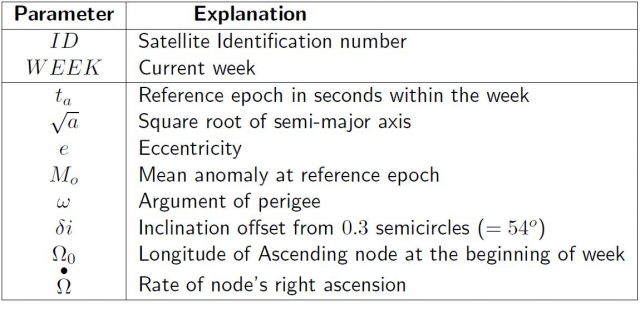If you wish to contribute or participate in the discussions about articles you are invited to contact the Editor
Coordinates Computation from Almanac Data: Difference between revisions
Jump to navigation
Jump to search
Carlos.Lopez (talk | contribs) No edit summary |
Carlos.Lopez (talk | contribs) No edit summary |
||
| Line 3: | Line 3: | ||
|Title={{PAGENAME}} | |Title={{PAGENAME}} | ||
|Authors= J. Sanz Subirana, JM. Juan Zornoza and M. Hernandez-Pajares, University of Catalunia, Spain. | |Authors= J. Sanz Subirana, JM. Juan Zornoza and M. Hernandez-Pajares, University of Catalunia, Spain. | ||
|Level= | |Level=Basic | ||
|YearOfPublication=2011 | |YearOfPublication=2011 | ||
|Logo=gAGE | |Logo=gAGE | ||
Revision as of 15:40, 27 October 2011
| Fundamentals | |
|---|---|
| Title | Coordinates Computation from Almanac Data |
| Author(s) | J. Sanz Subirana, JM. Juan Zornoza and M. Hernandez-Pajares, University of Catalunia, Spain. |
| Level | Basic |
| Year of Publication | 2011 |
The almanac data allow to compute a raw estimation of the satellites coordinates (1-2 km [math]\displaystyle{ 1- \sigma }[/math] error), which is needed for signal acquisition by the receiver.
The almanac data consist of a reduced set of parameters (with respect to broadcast ephemeris), as it is shown in table 1 for GPS satellites. Similar data is broadcast for Galileo.
Thence, the same equations as in article GPS and Galileo Satellite Coordinates Computation can be used to compute the coordinates from almanac, just taking:
- [math]\displaystyle{ \Delta n =C_{uc}=C_{us}=C_{rc}=C_{rs}=C_{ic}=C_{is}=0 }[/math]
- and
- [math]\displaystyle{ i=54^o+\delta i \qquad \mbox{(GPS satellites)} }[/math]


